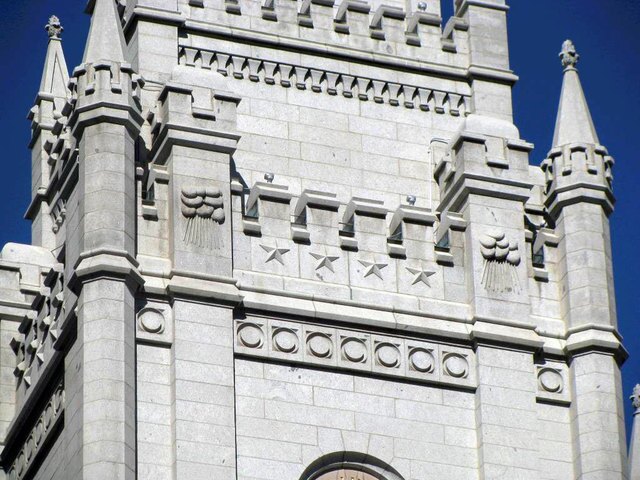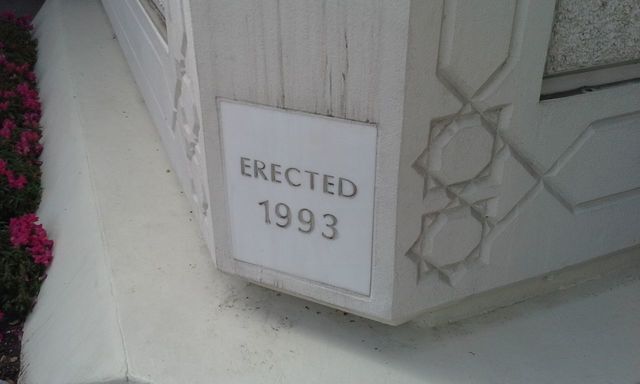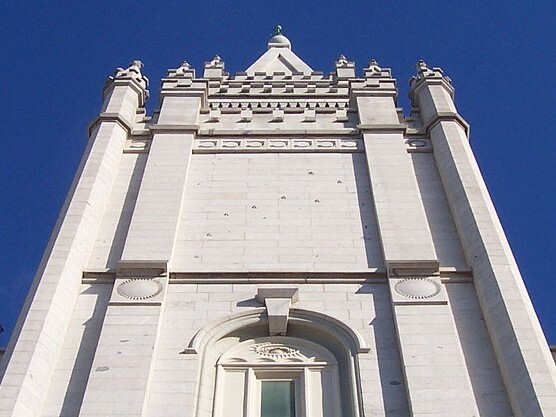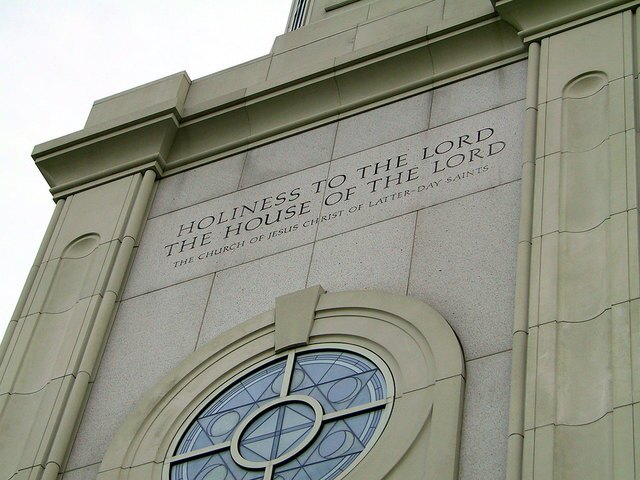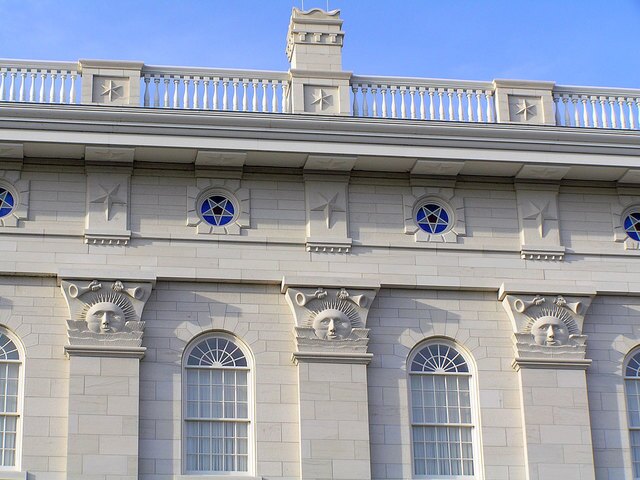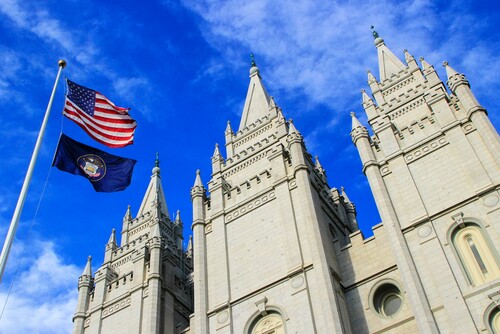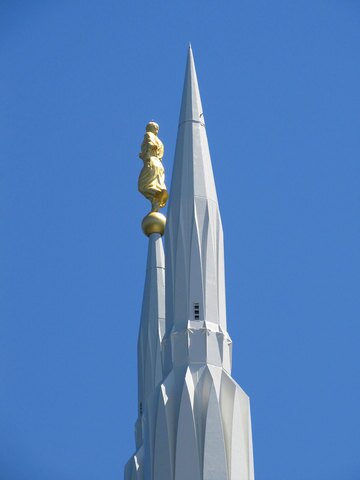Temples, as we know, are richly covered in symbols.But of all symbols, stars seem to be the most commonly seen. Here are just a few different types of stars you might spot on temples, plus the symbolism behind them. (You may also want to check out "5 Tips to Better Understand Temple Symbols" for more information.)
Five-Pointed Stars
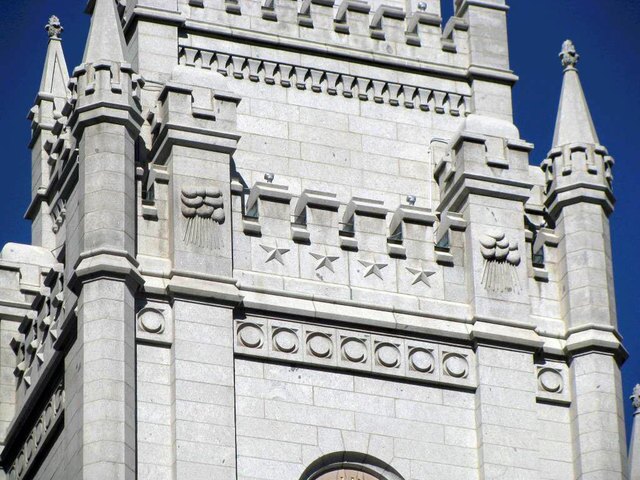
Photo of the Salt Lake Temple taken in 2008 by Carl V. Larson, retrieved from ldschurchtemples.org
There are over 40 of these stars found on the Salt Lake Temple. Here's whatUnderstanding Temple Symbols Through Scripture, History, and Art has to say about the symbolism behind these stars.
"A common theme in medieval art was the five wounds of Christ, traditionally the holes of the nails in the Savior's hands and feet and the cut of the spear through his side and into his heart. . . . In the Middle Ages, the five wounds were symbolized in church decoration as a five-pointed star. This symbol is still used in temples today, including windows of the Nauvoo Illinois Temple" (pg. 125).
This symbolism carries inside the temple:
"Other elements of temple worship are related to the number five: During the endowment we actually or symbolically visit five rooms, make five covenants, receive a charge composed of five elements, and put on five articles of temple clothing, tie five bows on our clothing (symbols of connection), and witness five visits of heavenly messengers to our first parents and their posterity. Surely this is not the result of chance; all of these (and more) point to the Savior as the 'well of living water' (D&C 63:23) and the 'fount of every blessing" (pg. 126).
The book Sacred Walls: Learning from Temple Symbols gives an extra insight into the significance of the number of five-pointed stars.
"According to scholar Richard Oman, the forty five-pointed stars, found only on the three eastern towers, may refer also to God's gift of priesthood to guide us, in that they may represent the great and noble spirits of premortality whom God assigned to be rulers in His kingdom" (pg. 54).
Inverted Pointed Stars
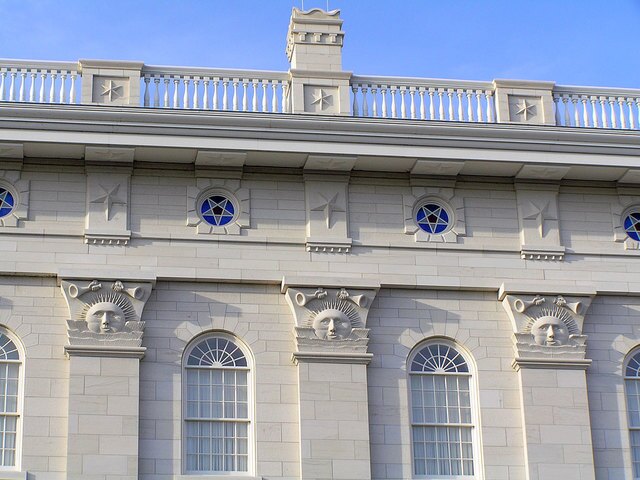
Photo of the Nauvoo Temple taken in 2005 by Scott Cannon, retrieved from ldschurchtemples.org
Note the inverted stars in the windows and the inverted stars with elongated bottom rays on the stones between the windows.
Though the inverted star has been viewed as an evil omen by the world in more recent years, the inverted pointed stars found on LDS temples have special, spiritual significance. Particularly on the Nauvoo Temple. We learn from Sacred Walls that
"The inverted star above [the sun bursting forth from the three cloud-veils], pointing to the sun, is the morning and evening star, the first and last star to appear in the sky at daybreak and dawn, a symbol of Christ (see Revelation 2:28; 22:16). It is literally the planet Venus, which reflects the light of the sun, just as Christ points the way to and reflects the light of the Father.
"The stained-glass windows with the inverted pointed stars surrounded by the twelve stones also represent Christ as the central focus for all of Israel, just as the tabernacle of Moses, positioned at the center of the camp of Israel, surrounded by the tents to the twelve tribes on all sides, also signified the centrality of God (see Numbers 2:1-34)."
Venus, or the "Morning Star," used to be commonly represented by the inverted star, and was associated with the coming of Jesus Christ or the downward flow of revelation.
The Fair Mormon website adds:
"In 1985 LDS Church Architect Emil B. Fetzer stated that the inverted stars on early LDS temples were not sinister but were “symbolic of Christ.” He said that when the LDS Church “uses the pentagram or sunstone in an admirable, wholesome and uplifting context, this does not preclude another organization’s using the same symbols in an evil context.”
A subset of the inverted star is the five-pointed star with an elongated bottom ray. In Understanding Temple Symbols, author Jack Lyon explains the extra significance of this star variation.
"During the construction of the Logan Utah Temple, a newspaper reported that the five-pointed star with an elongated bottom ray symbolized 'the Star of the Morning,' which is a title of the Lord (Deseret Evening News, August 20, 1880, 3; see Revelation 22:16). Again the elongated bottom ray pointing downward indicates that the Savior has descended from heaven to earth" (pg. 125).
Six-Pointed Stars
Six pointed stars on temples can either look more like the Star of David or like twinkling lights. Those that look like the star of David, such as the one on the St. Louis Missouri Temple, remind us of Jesus Christ and his lineage.
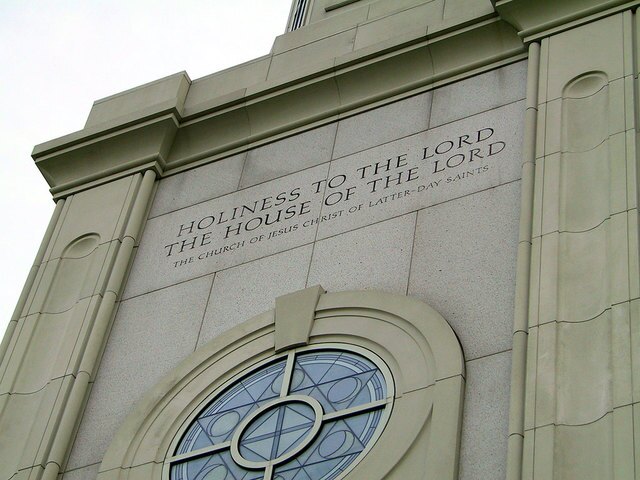
Photo of the St. Louis Missouri Temple taken in 2002 by Dave Caron, retrieved from ldschurchtemples.org. Notice the Star of David in the window.
Sacred Walls shares about the symbolism of the other type of six-pointed stars found on temples like Nauvoo and the Portland Oregon Temple:
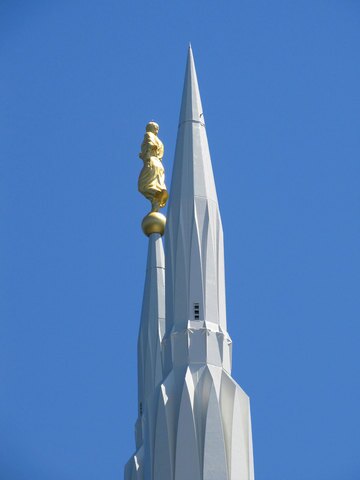
Photo of the Portland Oregon Spire taken in 2013 by Nathaniel Gionz, retrieved from ldschurchtemples.org
"The six-pointed stars above the inverted five-pointed ones represent real stars in the heavens, as the temple symbolism continues to draw the viewer's gaze upward into heavenly spheres and beyond" (pg. 54).
Constellations
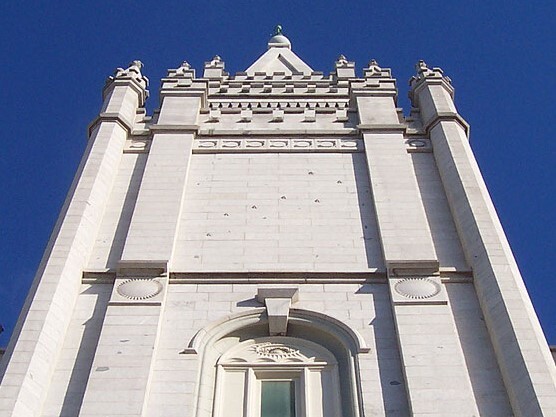
Cropped image of an original photo taken in 2008 by Andy Nelson, retrieved from ldschurchtemples.org
A handful of temples actually display an arranged set of stars representing a constellation—the Big Dipper. This star symbol is found on the Salt Lake and Washington D.C. temples, to name a few. What is the symbolism behind it?
" . . . the Big Dipper (the constellation that points to the North Star and allows travelers to take their bearings) also points to the gift of the priesthood and its ordinances as the means by which men and women can find their way back to God" (Sacred Walls, pg. 79).
Eight-Pointed Stars
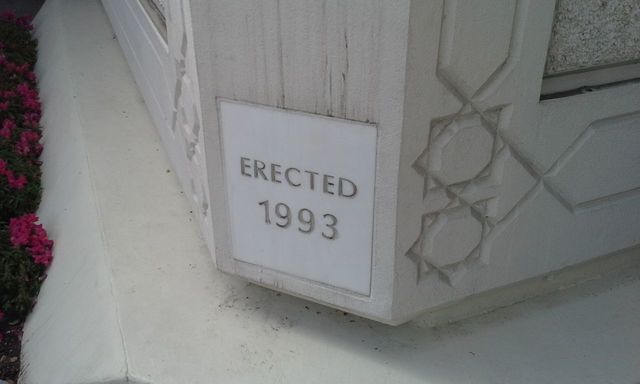
Photo of the San Diego Temple taken in 2014 by Dave Andrew, retrieved from ldschurchtemples.org
What is often recognized as the "Bethlehem Star" is also more controversially referred to as "the Seal of Melchizedek." There are many pieces of symbolism assigned to this sign. One is in the number of points in the star.
"In scripture, the number eight always points to a new beginning, purification, or the Atonement. It is found in association with temples, ordinances, or other holy themes."
Though there is some controversy over this symbol's appearance on the San Diego Temple, there are still lots of interesting tidbits in "Why This Symbol Appears 10,000 Times in the San Diego Temple."
Lead image from Shutterstock
